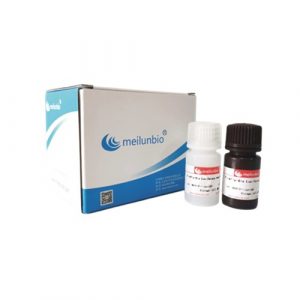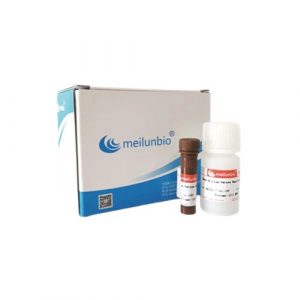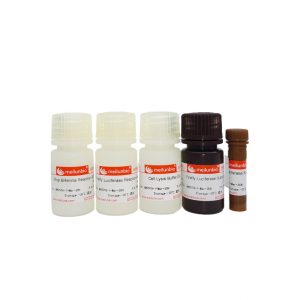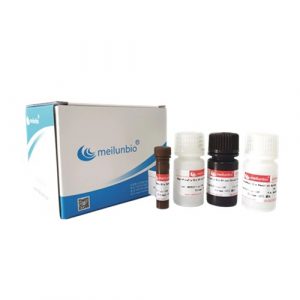Product Description
Reporter gene systems are commonly used in eukaryotic gene expression and cell physiology research, covering various aspects such as receptor activity, transcription factors, cell signaling, mRNA processing, and protein folding. “Dual reporter genes” are commonly utilized to enhance experimental accuracy by simultaneously expressing and measuring two independent reporter genes in one system. Typically, the reporter gene in the experimental group is associated with the effects of specific experimental conditions, while the co-transfected internal control group reporter gene serves as a calibration parameter and internal reference to establish a baseline for the response. Comparing the results of the experimental group to those of the internal control group helps minimize result fluctuations arising from variations in cell viability or transfection efficiency, as well as mitigates experimental errors stemming from sampling volume, cell lysis efficiency, and instrumental measurements. Consequently, dual reporter gene assays can generate more dependable experimental data by reducing external influences. Firefly luciferase and Renilla luciferase are the most commonly used “Dual reporter gene” systems. Both are monomeric proteins that do not require post-translational modification, and are characterized by rapid, easy and sensitive detection.
The Firefly&Renilla Luciferase Reporter Assay Kit provides a validated dual reporter assay that detects Firefly luciferase in the same sample using Luciferin as the substrate, followed by Coelenterazine as the substrate to detect Renilla luciferase. In the same sample, Luciferin was used as a substrate to detect Firefly luciferase, and then Coelenterazine was used as a substrate to detect Renilla luciferase, while quenching the fluorescent signal of Firefly luciferase, thus realizing the dual luciferase reporter gene detection.
Firefly&Renillalight Luciferase Reporter Assay Kit has the following advantages: prolonged luminescent signal Stability, nearly 2 hours of signal half-life provides greater flexibility for experimental design; more in line with the high-throughput detection, do not need to rely on the autosampler, and do not need to discard the culture fluid, centrifugation and other steps to simplify the experimental process; the kit components have been optimized, and compared with the traditional flash-type products, there is no obvious irritating odor. Firefly&Renillalight Luciferase Reporter Assay Kit can be used in a variety of commonly used cell culture fluids: RPMI 1640, DMEM, MEM-α, F12, DMEM/F12, etc., with a half-life of about 2 hours (at 22℃), which meets the needs of most high-throughput experiments.

Performance
Figure 1. FIREFLY & RENILLALIGHT luminescence quenching effect, comparing P company brands.
The same concentration of Firefly, Renilla fluorescein enzyme in the system, sequentially added FIREFLYGLO and Stop&RENILLALIGHT reaction solution, respectively, to record the luminescence intensity of the two fluorescein enzyme as well as the quenching situation. As can be seen from the figure, the luminescence intensity and quenching effect of the two enzymes in the MeilunBio group is basically no different from that of the P company brand.
Figure 2. FIREFLYGLO/ RENILLALIGHT Luminescence stability compared to P company brand.
FIREFLYGLO/RENILLALIGHT from Meilunbio is very close to P company in terms of absolute Luminescence intensity and luminescence stability within a certain concentration range.
Figure 3. Validation of FIREFLYGLO/RENILLALIGHT linear range.
At a single moment, the MeilunBio FIREFLYGLO, RENILLALIGHT luciferase concentration-light intensity curve has good linearity (R2 = 0.9974 (Firefly); R2 = 0.9996 (Renilla))
Figure 4. FIREFLYGLO/RENILLALIGHT luminescence assay in different media.
The data in the figure were normalized with the respective RPMI-1640 groups, and the MeilunBio system can be normally luminescent in the commonly used media: DMEM, F12, MEMα, and RPMI-1640, and the difference of luminescence effect in different media is smaller than that of P company.
Figure 5. FIREFLYGLO/RENILLALIGHT phenol red tolerance assay.
PBS solution containing concentration gradient 0-20mg/L was prepared, and equal amount of Firefly or Renilla luciferase was added to each group respectively, and the luminescence of FIREFLYGLO and RENILLALIGHT was detected. As can be seen from the figure, Meilunbio FIREFLYGLO/RENILLALIGHT has a stronger phenol red tolerance than P company.
Figure 6. Examples of FIREFLYGLO/ RENILLALIGHT Luminescence stability (A) and cell concentration- light intensity curve (B) in cell culture media.
In situ tracking assay of FIREFLYGLO and RENILLALIGHT luminescence in a cell culture medium. As can be seen from the figure, the FIREFLYGLO and RENILLALIGHT luminescence stability and absolute light intensity did not differ significantly from the P company brand; moreover, the cell concentration-light intensity curve had good linearity for the single moment condition of the MeilunBio group (R2=0.996 (Firefly); R2=0.999 (Renilla)).
Figure 7. TNFα gradient-induced NF-κB signaling pathway detection effect compared to P company.
HEK-293T cells were co-transfected with Firefly Luciferase NF-κB response reporter and Renilla Luciferase internal reference plasmid. After 12h post-transfection, a TNFα concentration gradient (0-40ng/ml) induction was carried out for 5h, the detection reagents were added in situ in the cell culture system, and the signal readings of the dual enzymes were sequentially incubated and detected using a Microplate Absorbance Reader, respectively, in accordance with the steps in the instructions. The FIREFLYGLO and RENILLALIGHT light intensities were approximated and normalized (F/R ratio normalized). It is clear from the figure that the Firefly/Renilla ratio is positively correlated with the administered concentration and that the change in TNFα gradient induction is more significant in the MeilunBio group than in the P company brand. (Instrument: BioTek HTX)
Shipping and Storage
- Storage:The new kit is stored at -20℃ and is valid for one year.Dissolved and dispensed Firefly Luciferase Substrate is stored at -70℃ for one year protected from light, or -20℃ for short-term storage not exceeding one month.
- Shipment:
Usage Statement
Research Use Only (RUO)
All sales are subject to the General Terms and Conditions of Sale set forth on our website.





